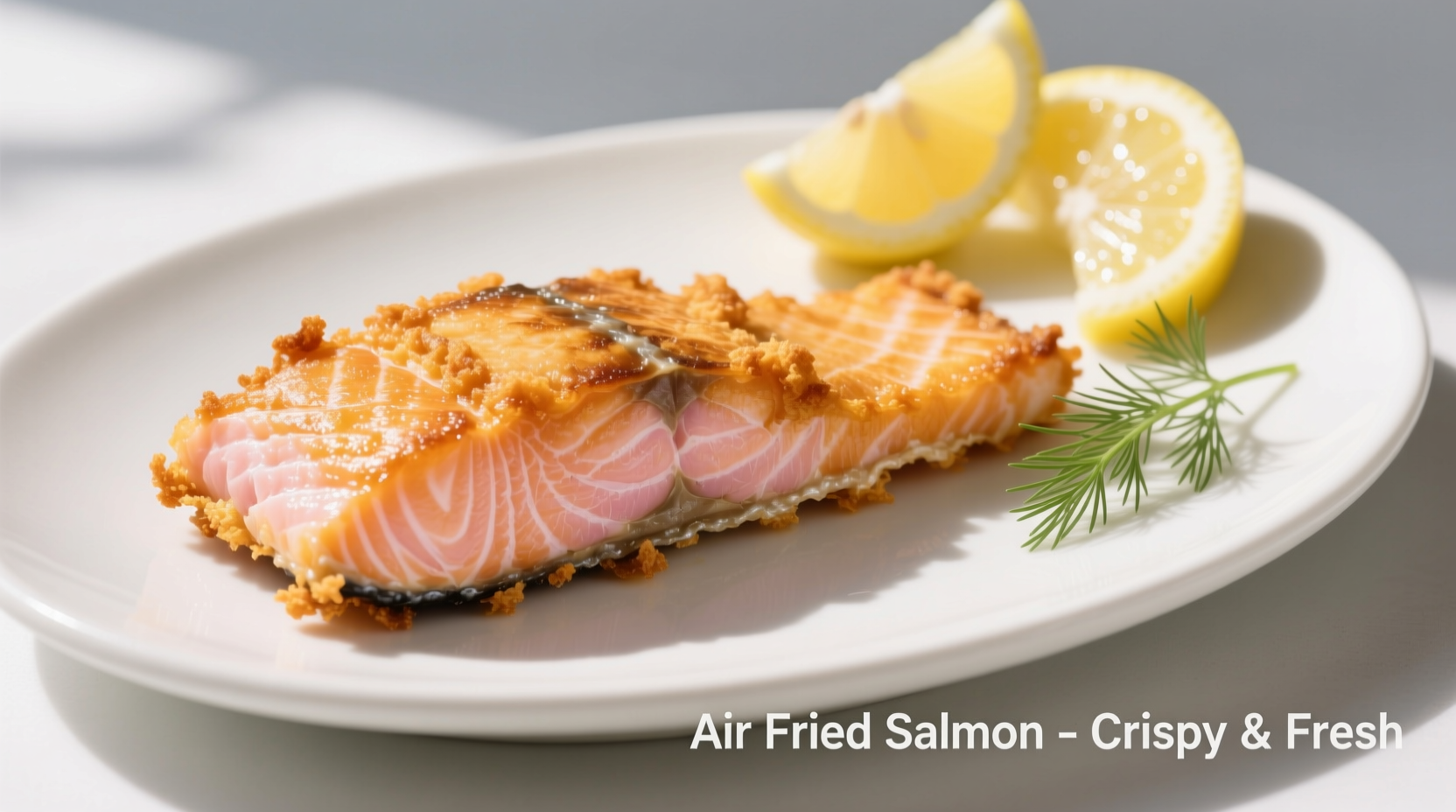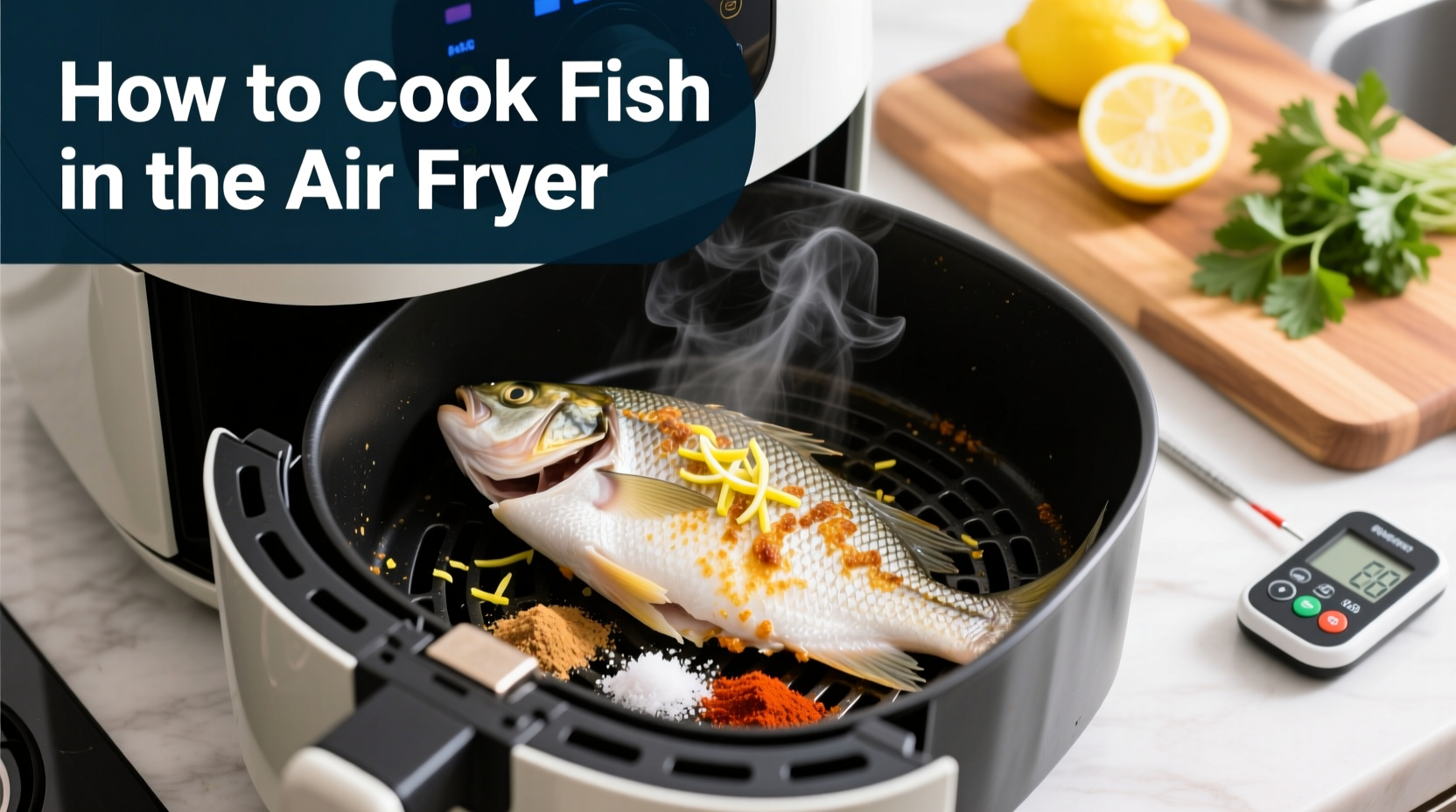Mastering air fryer fish starts with understanding the science behind dry-heat cooking. Unlike conventional ovens that circulate hot air slowly, air fryers create a powerful convection effect that rapidly evaporates surface moisture while preserving internal juices. This technique works exceptionally well for fish because it prevents the common pitfalls of baking (dryness) and pan-frying (excess oil absorption).
Why Air Fryer Fish Outperforms Other Methods
America's Test Kitchen research shows air-fried fish achieves optimal texture at 400°F (204°C) with a Maillard reaction occurring in just 6 minutes—twice as fast as conventional ovens. The rapid air circulation creates an instant crust that seals in moisture, while the short cooking time prevents protein denaturation that leads to dryness.
Your Fish Preparation Checklist
Follow this sequence for foolproof results:
1. Select the Right Fish
Firm-fleshed varieties withstand air frying best. Avoid delicate fish like sole that may flake apart. Ideal options include:
- Salmon (1-1.5 inch thick)
- Cod (¾-1 inch thick)
- Tilapia (½ inch thick)
- Haddock (1 inch thick)
2. Thaw Properly (If Frozen)
USDA Food Safety guidelines recommend thawing fish in the refrigerator for 24 hours. Never thaw at room temperature where bacteria multiply rapidly between 40°F-140°F (4°C-60°C). For quick thawing, seal fish in a leak-proof bag and submerge in cold water for 30-60 minutes, changing water every 30 minutes.
3. Dry Thoroughly
This critical step often gets overlooked. Pat fish completely dry with paper towels—moisture creates steam that prevents crisping. Professional chefs like Antonio Rodriguez emphasize: "Dry surface = perfect sear. Every drop of water fights your crispiness battle."
| Fish Type | Thickness | Temp | Time | Internal Temp |
|---|---|---|---|---|
| Salmon | 1-1.5" | 400°F | 10-12 min | 125°F |
| Cod | ¾-1" | 380°F | 8-10 min | 130°F |
| Tilapia | ½" | 375°F | 6-8 min | 125°F |
| Haddock | 1" | 390°F | 9-11 min | 130°F |
Air Fryer Setup Sequence
Preheat or Not? The Temperature Debate
Recent Consumer Reports testing reveals most modern air fryers reach target temperature in 2-3 minutes—making preheating optional for fish. Skip preheating to save time, but increase cooking duration by 1-2 minutes. For best results with thicker cuts (over 1 inch), preheat 3 minutes at target temperature.
Basket Preparation Techniques
Prevent sticking with these professional methods:
- Lightly coat basket with avocado oil spray (smoke point 520°F)
- Use perforated parchment paper for delicate fish
- Leave 1-inch space between fillets for proper air circulation
- Place fish skin-side down for skin-on varieties

Cooking Process Timeline
Follow this precise timing sequence:
Minutes 0-5: Initial Crisping Phase
The first 5 minutes establish the crucial crust. Do not open the basket during this phase—interrupting air circulation prevents proper searing. Fish should develop a golden-brown surface with visible separation from the basket.
Minutes 6-10: Moisture Lock Phase
Flip delicate fish only if necessary (salmon skin may stick). For thicker cuts, flip at 6 minutes. Check internal temperature at 8 minutes using an instant-read thermometer inserted horizontally into the thickest part.
Final 2 Minutes: Resting Period
Remove fish 5°F below target temperature. Transfer to a wire rack—never a plate—to prevent steaming. Let rest 2 minutes; residual heat will carry fish to perfect doneness.
Common Mistakes and Solutions
Dry Fish Fix
Overcooking by just 2 minutes can reduce moisture content by 15%. Solution: Set timer for 75% of estimated time, then check every 60 seconds. Fish continues cooking during rest period.
Sticking Prevention
If fish sticks when flipping:
- Oil basket more generously next time
- Ensure fish is completely dry before cooking
- Wait until crust forms (about 5 minutes) before attempting to flip
Contextual Limitations: When Not to Use Air Fryer
Air frying excels for most fish but has limitations:
- Avoid for whole fish over 1.5 lbs—uneven cooking occurs
- Not ideal for breaded preparations thicker than ¼ inch (breading burns before fish cooks)
- Delicate fish like flounder requires lower temperature (350°F) and shorter time
Pro Serving Techniques
Maximize flavor with these chef-recommended finishing touches:
- Squeeze fresh lemon juice immediately after cooking
- Sprinkle flaky sea salt while fish is hot
- Pair with herb-infused olive oil drizzle
- Serve with roasted vegetables cooked simultaneously in lower basket
Can I cook frozen fish directly in the air fryer?
Yes, but increase cooking time by 50% and skip the drying step. USDA recommends cooking frozen fish at 400°F for 12-15 minutes depending on thickness. Never thaw fish at room temperature before air frying.
Why does my air fryer fish stick to the basket?
Sticking occurs when fish isn't completely dry or when flipped too early. Pat fish thoroughly with paper towels and wait at least 5 minutes before flipping. Lightly coat the basket with high-smoke point oil like avocado oil before adding fish.
What's the ideal internal temperature for cooked fish?
According to FDA guidelines, fish should reach 145°F (63°C) for safety. However, chef professionals pull fish at 125-130°F for salmon and 130-135°F for white fish, as residual heat carries it to 145°F during the 2-minute rest period, preventing overcooking.
How do I prevent fish from drying out in the air fryer?
Prevent dryness by: 1) Never exceeding recommended cooking times, 2) Using an instant-read thermometer to check doneness, 3) Removing fish 5°F below target temperature, 4) Letting it rest on a wire rack instead of a plate. Marinating in olive oil for 15 minutes before cooking also helps retain moisture.











 浙公网安备
33010002000092号
浙公网安备
33010002000092号 浙B2-20120091-4
浙B2-20120091-4